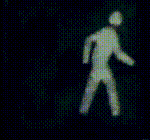|
IOwnCalculus posted:Holy poo poo, that's slick as hell. I could actually see switching to that from my Nexenta based setup on my next drive swap. It's pretty cool so far. Installing openVPN actually went smoothly. I'm going to rebuild the VM that I'm testing this on tonight to test out some other configurations. I probably need to allocate some more hard drive space to the VM. Out of the box you can use http://hda and this will bring up the index screen and the installed applications. Or http://hda/movies/ for your movie folder (needs some minor configuration). I also have http://scicalc/ which loads up a web based scientific calculator (you have to install this). I'm into the Home Digital Assistant (HDA) concept, and I'm glad I found this. It also has a lot of cool local and external media streaming applications. Of course having a free url makes it easy to get to your media externally. e: while I'm going on about http://eyeos.org/ Devian666 fucked around with this message at 03:42 on Sep 3, 2012 |
|
|
|

|
| # ? May 23, 2024 14:49 |
|
This talk of greyhole has reminded me that the btrfs allocater has been improved recently and is smart enough now to spread raid1 piece replication in such a way as to maximize space (requires a recent kernel, in the following example I'm using 3.5). This should be good for anybody who wants the convenience of "just add disks" but would also like to have data checksumming/scrubbing/snapshotting. Currently only raid1 is supported and while there are As an example I've created a VM with an OS disk and 5 other disks sized: 2, 2, 4, 8, 16GB. First lets create the btrfs volume and mount it. code:Now lets see how much data this "32GB" volume will really accept. code:code:As an added benefit btrfs supports removing devices and permanently shrinking the total storage capacity, something that many other solutions find annoying, painful or potentially impossible (hello zfs). code:code:code:code:code:So there you have it. If you're willing to deal with btrfs quirks (why did the btrfs df command output formatting change halfway through this demo?) and understand that it's still not "production" ready (even though oracle and a few other companies apparently have enough faith in it to sell you support) you now have a checksumming/snapshotting/compressing alternative for mirroring volume management across heterogeneous disks. I've been using btrfs for some volumes where I store large static content and haven't had any issue in the 2 years I've used it. Longinus00 fucked around with this message at 07:58 on Sep 3, 2012 |
|
|
|
Devian666 posted:This weekend I've been testing Amahi and it's interesting. It includes a drive pooling system like windows home server. So you can add whatever sized drives and any data that you require to be redundant you need to indicate that. Other than any redundancy it makes your collection of drives into one giant hard drive. Wow, Amahi sounds great. I had thought about WHS, but this sounds better
|
|
|
|
I've got a Silverstore 2-bay NAS, and one of the shares on it disappeared. It still shows up in the browser-based config pages, but I can't approach it through either Windows or MacOS (it just throws up a "can't connect, contact systems admin"-message or something). I can only get to the files on it through Silverstore's Tonido service, but that it really not designed for transferring millions of files totaling over a hundred gigs. In any case, the data is still there, but I can't get to it, and plugging the drive directly into a computer doesn't work either (because of the formatting of the drive, I guess). One other, minor share seems to have shared the same fate, I think that one's been gone for a while longer but both it and the data it contains are unimportant so I only just noticed it. All other shares are working fine. Any ideas what I can try to get my data back?
|
|
|
|
There's no way to roll back a zfs pool version is there? I'm currently running openindiana and stupidly upgraded my pools to the feature flags pool version (the one that shows up as 3000 or whatever) without realizing this would break compatibility with all the other available zfs platforms.
|
|
|
|
There is no zfs downgrade.
|
|
|
|
Been looking at the QNAP forums and they have some interesting porting going on. They have successfully reflashed QNAP hardware with Synology DSM, also success reported on VM's and bare metal hardware such as Atom system boards.
|
|
|
|
I'm thinking about buying another NAS and finally getting serious about data redundancy. It'd seem that Synology and QNAP are the qualitative leaders in the field, but I'm having trouble deciding between them. When considering technically similar devices, which manufacturer would you prefer, Synology or QNAP? (More specifically, I'm looking at the Synology DS413j and the QNAP TS-412, which seem fairly similar in specs.) As an added question, I've noticed that some devices have two gigabit ports. Does this actually have a significant effect on transfer speed?
|
|
|
|
Jolan posted:As an added question, I've noticed that some devices have two gigabit ports. Does this actually have a significant effect on transfer speed?
|
|
|
|
Do you guys think the 2TB & 3TB drives will go below $50/TB any time soon?
|
|
|
|
|
fletcher posted:Do you guys think the 2TB & 3TB drives will go below $50/TB any time soon? http://pcpartpicker.com/parts/internal-hard-drive/#sort=a5 A couple drives already are
|
|
|
|
fletcher posted:Do you guys think the 2TB & 3TB drives will go below $50/TB any time soon?
|
|
|
|
I want to pick up one of the new Synology DS413J's + 4x2TB drives. Which are the appropriate drives to get? Are EARX drives fine? The Compatibility Page has a giant list, but I don't want any of the head parking nonsense or drives being dropped from the RAID or whatever. The 2TB Reds don't appear to be available anywhere yet; I guess to avoid any worries I can just wait for them to show up in stock again.
mik fucked around with this message at 20:06 on Sep 6, 2012 |
|
|
|
DrDork posted:Depends on your usage scenarios. Do you commonly find yourself needing more than 100MB/s of bandwidth? If you're just connecting to it from one computer at a time, no, it will not make any difference (or if you've got a few devices but they're all real low-bandwidth, like a couple computers streaming compressed video/music). If you've got multiple computers connecting to it at once and are asking for a lot of bandwidth, however, it may speed things up if your drives can more than saturate a single GigE connection. You're still only going to be able to get one port's-worth of bandwidth to a single computer, though--having 2xGigE ports will not let you transfer your porn at 200MB/s--you'll be stuck at 100MB/s. I'm probably going to use 5400rpm WD Greens and when I'm using two computers, at least one of them is using WiFi, so I don't think the second port will do much for me speed-wise. Then the question remains: QNAP TS-412 Turbo or Synology DS413j? I've noticed that the TS-412 supports Raid10, which theoretically provides the same security as Raid1. How does this work in practice? If one of the four drives dies, can I just replace it and everything will correct itself or does the entire volume need to be remade on all four disks or... what? What effect does a bad sector on one disk have on the rest of the array? (I'm really new to Raid.)
|
|
|
|
Jolan posted:I'm probably going to use 5400rpm WD Greens and when I'm using two computers, at least one of them is using WiFi, so I don't think the second port will do much for me speed-wise. Are those green drives on their compatibility list?
|
|
|
|
Moey posted:Are those green drives on their compatibility list? They're on the unofficial list, and I can't find real issues with the TS412 and those disks on the boards (lots of people warning about them though, but with little to back up their statements). I can always just pick up four Seagate ST3000DM001's instead, they're on the official list and cost pretty much the same (though I haven't found out how they compare power consumption-wise yet).
|
|
|
|
I've started to run into a strange speed problem with my setup. I'm running NAS4Free on a N40L with 8GB RAM, 4x2TB drives in RAID-Z1, and an Intel Pro NIC. The drives, while similar, are not all exactly the same (2x Seagate Greens, 1x different Seagate Green, 1x Seagate Baracuda). The array is about half full, mostly with music and movies, but also with a several thousand image files from the finance's photography business. Everything's all in one pool and then shared out over CIFS. About half of my files (no pattern that I can discern) transfer to my computer at what I consider to be the correct rate--between 60 and 90MB/s. The other half only transfer at 15-25MB/s. While I have no idea what separates the two categories, if it's a "fast" file it'll reliably be fast, and same with "slow" files. Similarly, writing files sees wild swings in performance, though it seems that in general things stay closer to the 100MB/s mark right after a NAS reboot, and over the next 12-24 hours slowly degrade down to around 15MB/s. I tried this on FreeNAS 8 and had similar issues. Any ideas?
|
|
|
|
ZFS raid is rather poor with lots of small files due to overheads such as checksumming but I doubt that's the whole story. I'm going to have to run some tests myself because I'm transferring all files from my Ubuntu Raid5 box over gigabit ethernet to NFS-shared Freenas N40L (original bios), 8GB ram, Raidz2 (5th drive on ODD sata), and holy poo poo is it slow. 300GB in 24 hours slow. At times like this I wish I could afford a turnkey solution.
|
|
|
|
DEAD MAN'S SHOE posted:At times like this I wish I could afford a turnkey solution. And, yeah, I'd expect ZFS to not be too keen on handling all the little files and whatnot, but I'm talking big files here. Like 10GB videos, some of which fly along at 90MB/s, others of which slug it out at 15MB/s. No idea why.
|
|
|
|
DrDork posted:I've started to run into a strange speed problem with my setup. I'm running NAS4Free on a N40L with 8GB RAM, 4x2TB drives in RAID-Z1, and an Intel Pro NIC. The drives, while similar, are not all exactly the same (2x Seagate Greens, 1x different Seagate Green, 1x Seagate Baracuda). The array is about half full, mostly with music and movies, but also with a several thousand image files from the finance's photography business. Everything's all in one pool and then shared out over CIFS. Do you have compression or dedup enabled on that pool?
|
|
|
|
A'nope. Don't have enough redundant data for dedup to make much sense, and half the point was to get performance over max storage, so I never even considered compression.
|
|
|
|
I can safely assume that a Seagate suddenly starting to squeal/buzz at a high pitch means the thing is dieing, right? --edit: I guess so, because I'm backing my poo poo up now and the transfer rate goes to zero when it happens. Also, I see that Western Digital has a red series now, drives meant for 24/7. Are they worth anything? Combat Pretzel fucked around with this message at 13:10 on Sep 8, 2012 |
|
|
|
Reds are good for sequential workloads and are presumably designed without retarded head parking and absurdly long timeouts. Only time will tell whether reliability is any better/worse than other WD drives. Availability is still kinda spotty
|
|
|
|
The big drives in my computer are essentially data dumps, so from that perspective, it'd do. I'm however pissed as hell that this Seagate Barracuda is making a fuzz, despite being under low load. It has 18000 hours of power-on time and shits the bed. My old WD RE2 system drive has like 35000 hours and a higher load, and it keeps on trucking like it's nothing.
|
|
|
|
2 questions about my raid-z server: #1: Is this drive (Hitachi 5k3000) rooted and due for warranty? I believe it's the source of the grief that I keep getting in the zpool insofar as it tells me it has 6558 unreadable (pending) sectors and this thing occasionally locks up when I read the zpool. code:edit: It also failed a long test: code:Is a WD30EZRX a stupid drive to replace it with, given WD's fetish for accelerated head parking and the like? The red drives are currently sold out and the price is $159 for the WD30EZRX vs $205 for the WD Red 3TB drive  Is the price difference worth it? Is the price difference worth it?
Nam Taf fucked around with this message at 02:23 on Sep 9, 2012 |
|
|
|
Seagate 3TB are $150 on NewEgg.
|
|
|
|
Should've clarified: I'm in Australia, so prices are different here.
|
|
|
|
I have a mac which is chock full of photos. I am thinking of building a small Linux/*BSD/etc fileserver which will let me do the following:
Hardware is probably going to be some all-in-one Atom mobo in a case with a bunch of SATA disks and some RAM Software - I am thinking that FreeNAS will be able to handle all of this with appropriate tweaking. I'll probably have to use rsync rather than Time Machine on the mac but I can live with that Criticisms?
|
|
|
|
lenitic posted:I have a mac which is chock full of photos. You should be able to cover the Time Machine with FreeNAS. I have one working with OpenIndiana although it took a bit of reading to get it running. My only suggestion is to go with a true backup solution for your irreplaceable photos. One copy on your FreeNAS and one on whatever cloud-backup product. You'd only have to spend the backup bandwidth once per picture, and you're very unlikely lose all your copies if something bad happens.
|
|
|
|
I have just finished a NAS build (with parts that have been hanging around for a long time waiting for me to finish). It's a dual-core atom 1.6ghz 3GB DDR2 RAM, 4x2TB SATA drives. I have it running NAS4free with the drives set up in a ZRAID1 array. A few questions: Is running ZFS with so little ram a good idea, even though only 1-2 users will be accessing the data at a time? My goal is to have this system handle media storage and torrenting onboard, would I be better off getting windows home server or sticking with NAS4free?
|
|
|
|
Hmm, I just discovered Raid5, which would give me 6TB of storage when using 4x2TB drives instead of 4x3TB drives with Raid1/10. Which means that for only about €200 more, I could get WD RE4s that have a 5-year warranty and should stand up to punishment a lot better. So I guess my question is: how does Raid5 compare to Raid1/10 in practice? I know it might be a bit slower for reading/writing and there's about the same room for failure, but are there any other differences between the two in terms of outcome? And when one drive were to fail and you'd plug in a new one, would it simply "recreate" the data on the lost drive without touching the other drives or do you need to back everything up somewhere else, re-initialize the entire Raid array, and then copy everything back over?
|
|
|
|
Any modern system will recreate the failed drive's dataset.
|
|
|
|
Yes, replacing a drive in raid5 puts the array in "degraded" mode, then you have to rebuild the missing data to return to normal status. NAS boxes and hotswap enterprise stuff tends to start the process on their own as soon as the bad disk is replaced while software raid tends to do nothing until you tell it which drive is the new one to use. The thing that makes raid5 dangerous for large drives though, is that once a drive breaks and you replace it, recreating the data on it means reading all blocks from every other drive in the raid to calculate the missing data. With huge 2 or 3tb drives you're very likely to hit a read error on another drive while doing this rebuild process. If you have a good raid controller it will just go "oh, this block is going to be corrupt, sorry about that" and carry on rebuilding the rest. You'll just have some garbled data in one or more of your files, if you're lucky. Sadly, the reality is that once most raid controllers hit a double disk read error, they go "FATAL ERROR! ABORT! ABORT!" then fails the second drive it had trouble reading from and disables the entire array. The problem is made worse with consumer drives like the WD Green and others, where the drive might lock up for a very long period trying to read a block, causing the raid controller to think the drive is completely dead when there's really just a tiny bit of inaccessible data on it. Statistically your odds are a little better with raid1 since you're just copying the missing data from a single drive to rebuild, but really the one you want for good data protection is raid6 + TLER capable drives. (or working backups)
|
|
|
|
error1 posted:With huge 2 or 3tb drives you're very likely to hit a read error on another drive while doing this rebuild process.
|
|
|
error1 posted:(or working backups)
|
|
|
|
|
error1 posted:Yes, replacing a drive in raid5 puts the array in "degraded" mode, then you have to rebuild the missing data to return to normal status. NAS boxes and hotswap enterprise stuff tends to start the process on their own as soon as the bad disk is replaced while software raid tends to do nothing until you tell it which drive is the new one to use. This is mostly a non-issue on good software raid systems, like NAS4Free, FreeNAS, etc. They won't die easily on green drives, and if they do run into something they can't read, they'll continue anyway. Since they checksum, at least you'll know about it. That said, on my home NAS, I am running RAID-6, just in case.
|
|
|
|
Anyone here familiar with the Western Digital Sentinel? Seem like a good deal for 12tb of Enterprise HDD's in a box running WHS http://www.newegg.com/Product/Product.aspx?Item=N82E16822236014&nm_mc=KNC-GoogleAdwords&cm_mmc=KNC-GoogleAdwords-_-pla-_-NA-_-NA I'm basically just looking for something to store my large media collection and serve it throughout my house, fwiw.
|
|
|
|
I'd be a bit wary of the Atom processor on these because they're normally paired with sub-par performance network cards / chips that can be an issue with more than a couple clients. The HP Microserver can support 3TB+ size disks so that with a few enterprise-class 3TB drives should be cheaper by a few hundred and get great performance. With that said, the 3TB drives that WD has in "enterprise class" are rather pricey and $350 is a bit steep for a 3TB drive even if it's "enterprise class" to me for home use. If you're willing and able to pay that much for drives, you should probably be buying some big-name vendor's DAS or SAN solutions for another few thousand more, not some dinky consumer-CPU based NAS device whose reliability itself isn't very enterprise-class if you ask me. I work in enterprise software and IT, don't ever buy anything labeled for home or home-like usage scenarios, you're wasting your money.
|
|
|
|
necrobobsledder posted:I'd be a bit wary of the Atom processor on these because they're normally paired with sub-par performance network cards / chips that can be an issue with more than a couple clients. The HP Microserver can support 3TB+ size disks so that with a few enterprise-class 3TB drives should be cheaper by a few hundred and get great performance. Are you basing your experience of atom+network cards on NAS systems or consumer atom boards? While I agree with you that this is overkill for merely serving On a more serious note, anything with dual NICs (and especially dual power supplies) is likely overkill for what you want. Save yourself some money. Wait, this thing runs windows server? Yea this is aimed at small businesses and not home users who don't care about AD features. Longinus00 fucked around with this message at 23:26 on Sep 9, 2012 |
|
|
|

|
| # ? May 23, 2024 14:49 |
|
I could do a Synology ds512+ with 5 3tb caviar greens for $1594. I have heard that the Caviar greens aren't great for Nas's, but will it really matter in my case? I will rarely ever have more than 1 user connected at a time.
|
|
|































